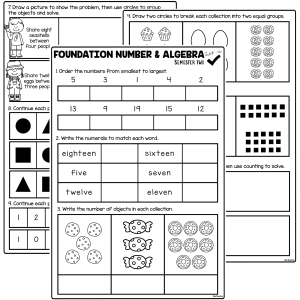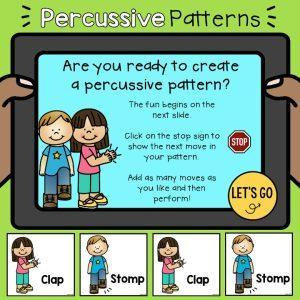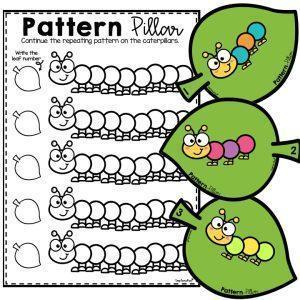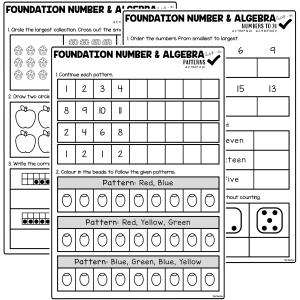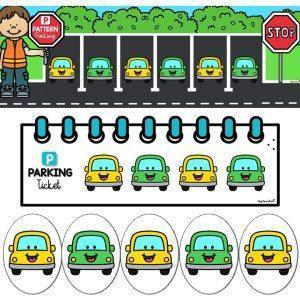Fruit Kebab Pattern Activity

Description
Bring patterning to life in a delicious and hands-on way with our Fruit Kebab Pattern Activity. Perfect for early years learners, this activity invites students to copy, continue, and create their own patterns using real fruit, making it a multi-sensory experience that is as engaging as it is educational. The combination of fine motor skills, creativity, and healthy eating makes this a unique and memorable addition to your maths program.
Students begin by choosing from a variety of pre-cut fruits. They can then follow a given pattern strip, extend an existing sequence, or design their own. Once the pattern is planned, they thread the fruit pieces onto a kebab stick, creating a colourful and patterned treat. After completing the kebab, students record their pattern on the accompanying worksheet before enjoying their creation as a healthy snack.
Patterning is a key mathematical skill in the early years, helping students recognise order, repetition, and predictability. By linking the concept to a tactile and real-world activity, this resource builds understanding in a fun and meaningful way.
Key Learning Outcomes:
- ✅ Identify, copy, and continue AB, AAB, ABB, and ABC patterns
- ✅ Create original patterns using a variety of elements
- ✅ Record patterns using drawings or symbols
- ✅ Develop fine motor skills through threading
- ✅ Make connections between mathematical concepts and real-life contexts
What’s Included:
- Pattern recording worksheet
- Visual examples of common pattern types
- Suggestions for extending and differentiating the activity
Materials Needed:
- Pre-cut fruit pieces in a variety of colours and shapes
- Wooden or reusable kebab sticks
- Printed pattern recording sheets
- Pencils or crayons for drawing patterns
- Optional: gloves or tongs for hygienic fruit handling
How to Use:
- Set up a selection of pre-cut fruit in separate bowls for easy access.
- Provide students with a pattern card or let them design their own sequence.
- Demonstrate safe threading techniques and model an example pattern.
- Have students thread their fruit pieces according to their chosen pattern.
- Encourage students to record their finished pattern on the worksheet before enjoying their kebab.
Ideas for Classroom Use:
- 💡 Use during a maths rotation focused on patterns and sequencing
- 💡 Incorporate into a healthy eating or nutrition unit
- 💡 Pair with stories or songs about fruit for a literacy connection
- 💡 Host a “Pattern Picnic” where students share and explain their creations
Top Teacher Tips:
- 💛 Pre-cut fruit into consistent sizes so patterns are visually clear and easier to thread
- 💛 Offer a mix of colours, shapes, and textures to encourage creativity and variety in patterns
- 💛 Use the activity as an informal assessment by noting which students can independently create more complex sequences
- 💛 If fresh fruit is not available, adapt the activity with pom poms, beads, or felt shapes for a reusable alternative
The Fruit Kebab Pattern Activity blends hands-on maths learning with healthy eating, making it a fun and practical way for students to explore and master patterning skills. Whether used as part of your maths rotations, a special theme day, or a cross-curricular health and maths lesson, this resource is sure to be a hit with both students and teachers.
Additional information
| Australian Curriculum Code | AC9M1A02, AC9MFA01 |
|---|---|
| File Format |
Australian Curriculum V9
F - 6
Lorem ipsum dolor sit amet, consectetur adipiscing elit.
Lorem ipsum dolor sit amet, consectetur adipiscing elit.
Lorem ipsum/ Lorem ipsum/ Lorem ipsum
Lorem ipsum dolor sit amet, consectetur adipiscing elit.
Lorem ipsum dolor sit amet, consectetur adipiscing elit.
Lorem ipsum/ Lorem ipsum/ Lorem ipsum
Lorem ipsum dolor sit amet, consectetur adipiscing elit.
Lorem ipsum dolor sit amet, consectetur adipiscing elit.
Lorem ipsum/ Lorem ipsum/ Lorem ipsum
Lorem ipsum dolor sit amet, consectetur adipiscing elit.
Lorem ipsum dolor sit amet, consectetur adipiscing elit.
Lorem ipsum/ Lorem ipsum/ Lorem ipsum
Lorem ipsum dolor sit amet, consectetur adipiscing elit.
Lorem ipsum dolor sit amet, consectetur adipiscing elit.
Lorem ipsum/ Lorem ipsum/ Lorem ipsum
